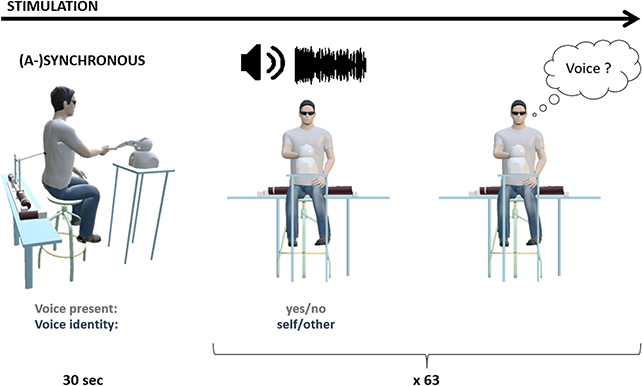We might automatically associate hearing voices with neurological conditions like schizophrenia. It now turns out most brains can be tricked into hearing voices that aren't there, given the right conditions.
Researchers from the École Polytechnique Fédérale de Lausanne (EPFL) in Switzerland and the University Savoie Mont Blanc in France wanted to investigate how auditory-verbal hallucinations (AVH) might be triggered in the mind: that's where we hear a voice, but there's no speaker present.
Previous studies suggest these hallucinations are caused either by an inability to correctly distinguish the self from its surroundings, or by strongly held beliefs or prior assumptions that outweigh whatever is actually happening in an environment. The team wanted to put both hypotheses to the test.

"Here, we developed a new method of inducing AVH in a controlled laboratory environment by integrating methods from voice perception with sensorimotor stimulation, allowing us to investigate the contribution of both major AVH accounts," the researchers write in their published paper.
The team adapted a technique they'd used before where when participants poked a button in front of them, a robotic arm poked them in the back. In this new experiment involving 48 participants, the poke delay was variable, and the volunteers wore headphones playing a mix of waterfall-like 'pink noise', and occassionally snippets of voices – both their own and other people's.
As with the previous push-button test, the participants reported feeling a presence behind them because of the poking – but some of them also reported hearing voices that weren't there through the headphones.
The phenomenon of hearing voices was more common if the volunteers heard someone else's voice before their own, and if there was a lag between the button pushing and arm poking. It was as if those involved in the test were making up a voice to go with the sensation of someone standing behind them.
These outcomes, the researchers think, are enough to suggest both hallucination-trigger theories are correct: participants were failing to correctly self-monitor their surroundings, and were being influenced by strong beliefs about what was going on around them.
Notably, the frequency of hallucinated voices increased with the length of the tests, so participants were more likely to hear the phantom sounds towards the end of the experimental session.
Ultimately, knowing how these hallucinations can be triggered is important in understanding how they relate to conditions such as Parkinson's disease. It's also an indication that if you do hear a voice in your head, it might not be immediate cause for alarm (though if you are concerned, best to see a doctor).
"Besides the novelty and the important methodological impact, these results shed new light on AVH phenomenology, providing experimental support for both prominent albeit seemingly opposing accounts – portraying AVH as a hybrid between deficits in self-monitoring and hyper-precise priors," write the researchers.
The research has been published in Psychological Medicine.
